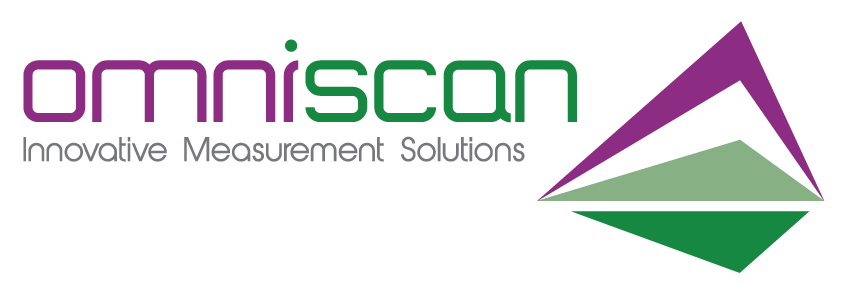Optical profilometry is an advanced, non-contact surface measurement technique that uses light to capture the topography of a surface. Widely utilised in fields like material science, semiconductor manufacturing, and quality control, optical profilometers provide high-resolution, three-dimensional images of surfaces, enabling detailed analysis without physically touching the material. Explore the fundamentals below, including its working principles, key benefits, applications, and why it’s an essential tool for precision measurement.
What is Optical Profilometry?
Optical profilometry is a surface metrology technique that uses optical methods to measure the topography of a surface. Unlike traditional mechanical profilometers that require contact with the surface, optical profilometers employ light—usually laser or white light— to scan the surface and create a high-resolution, 3D map. This non-contact nature makes optical profilometry an ideal choice for delicate or soft materials that might be damaged by contact-based methods.
Optical profilometers can capture both the macro and micro features of a surface with incredible accuracy, measuring surface roughness, step heights, and other important characteristics that influence material performance.
How Does it Work?
The basic working principles revolve around light reflection and interference. There are different types of techniques, but most rely on the following general steps:
- Light Source: The optical profilometer directs light (laser or white light) onto the surface being examined.
- Reflection and Detection: The light reflects off the surface and is detected by a sensor, which records the intensity and phase of the reflected light.
- Data Analysis: The data collected from the reflected light is processed to create a detailed 3D topographical map of the surface. This map can reveal fine details such as surface roughness, defects, and variations in height.
One popular technique within optical profilometry is interferometric profilometry, where the interference of light waves is used to achieve ultra-high precision measurements. This allows for incredibly detailed topographical data on surfaces, even at the nanometre scale.
Key Benefits
- Non-Contact Measurement: Optical profilometry’s non-contact nature means there’s no risk of damaging sensitive or delicate materials, making it ideal for use with soft, thin, or fragile surfaces.
- High Precision: With the ability to measure surface features down to nanometres, optical profilometers are perfect for industries requiring extreme accuracy, such as semiconductor manufacturing or material science.
- Versatility: Optical profilometers can measure a wide variety of surfaces, including flat, rough, smooth, and curved surfaces. This versatility makes them valuable across numerous industries.
- Rapid and Efficient: Optical profilometry can quickly provide detailed surface data, reducing the time required for inspection and enhancing efficiency in manufacturing processes.
- No Surface Preparation Needed: Unlike some traditional contact methods, optical profilometry does not require surface preparation (like cleaning or polishing), making it faster and more convenient.
Applications
Optical profilometry is employed across a variety of industries for applications that require precise surface measurements and analysis:
1. Semiconductor Manufacturing
In semiconductor manufacturing, surface topography plays a critical role in the functionality of microelectronic devices. Optical profilometers are used to inspect wafers, thin films, and photomasks, ensuring the surfaces meet stringent quality control standards.
2. Material Science
Optical profilometry is instrumental in material science research, particularly for analysing coatings, thin films, and surface textures at the micro and nanoscale. Researchers use it to study wear patterns, roughness, and other surface properties that influence material performance.
3. Automotive Industry
In automotive manufacturing, ensuring the proper surface finish of parts is crucial for performance and safety. Optical profilometry is used to measure body panels, engine components, and other parts, ensuring they meet quality standards for smoothness and roughness.
4. Aerospace
The aerospace industry relies on optical profilometry to measure the surfaces of parts such as turbine blades, wings, and other critical components. Accurate surface measurement is essential for ensuring performance and structural integrity under extreme conditions.
5. Optical Components
Optical profilometry is used to inspect and measure the surface quality of optical components like lenses, mirrors, and prisms. Ensuring that optical surfaces are free from defects is vital for the proper functioning of optical systems used in fields ranging from medical imaging to aerospace.
Why Choose Optical Profilometry?
Compared to traditional contact-based methods, optical profilometry offers numerous advantages. The primary benefit is its non-contact nature, which reduces the risk of surface damage. Additionally, it provides faster and more accurate results, especially for fine surface details that may be missed with other measurement techniques. For industries where surface quality is critical, optical profilometry is the go-to solution for precise, reliable measurements.
Conclusion
Optical profilometry is a powerful, non-contact technique for high-precision surface measurement. Its ability to provide detailed 3D surface maps without physical contact makes it a valuable tool in industries such as semiconductor manufacturing, automotive, aerospace, and material science. As the demand for higher precision and faster inspection grows, optical profilometry will continue to play a crucial role in surface metrology, improving quality control and contributing to innovation across various sectors.
By adopting optical profilometry, industries can achieve superior accuracy and efficiency in surface measurement, ensuring higher-quality products and better performance.
Contact us today to discover our range of solutions.


